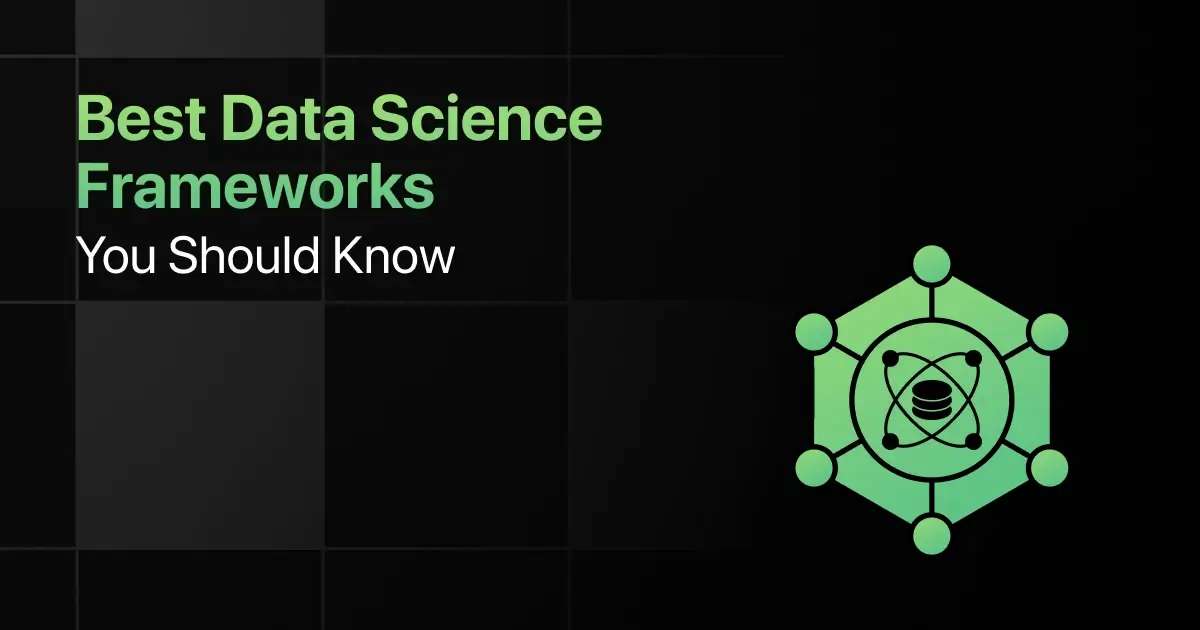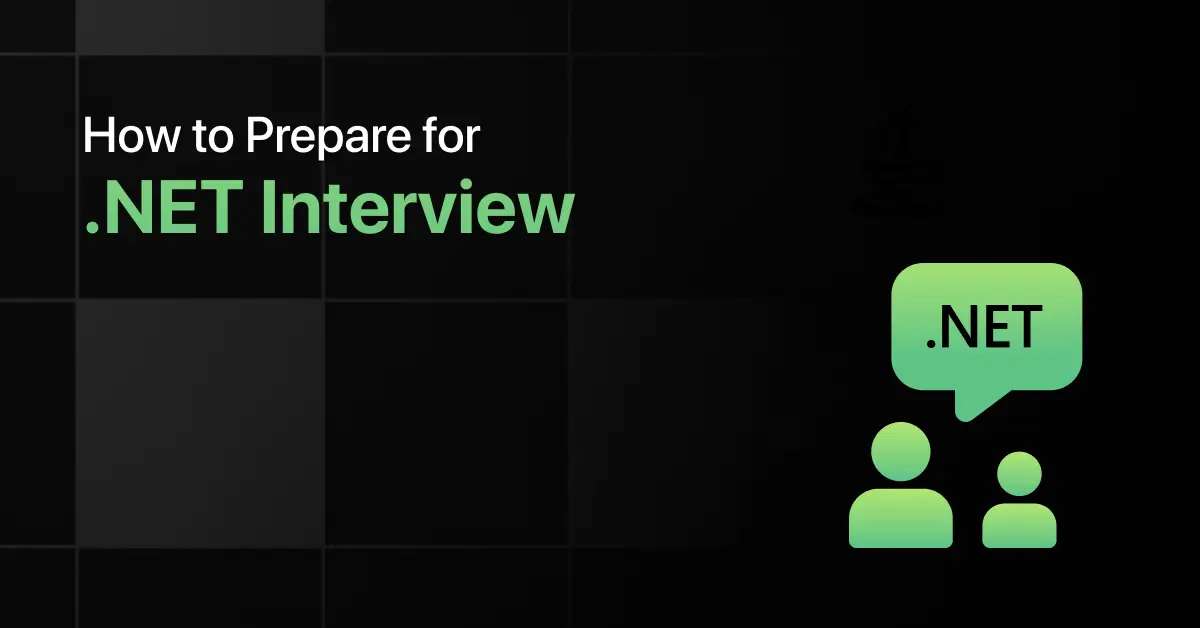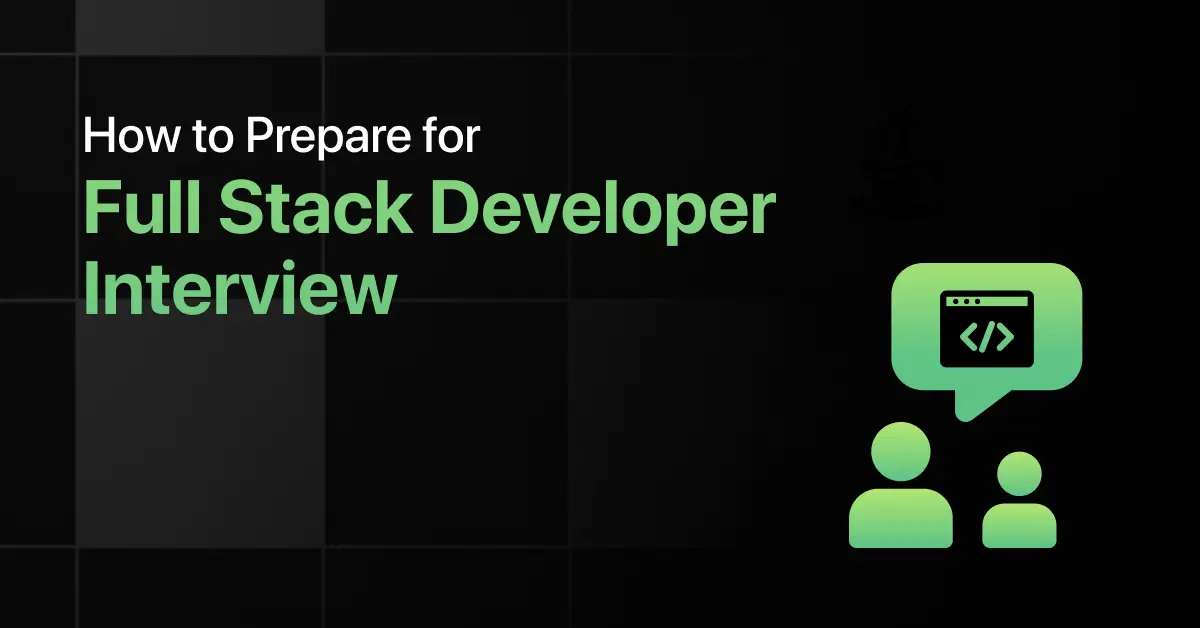Best Data Science Frameworks You Should Know

Data science frameworks are essential tools for developers. They provide a structured foundation to build data-driven applications.
This blog will explore a data science framework list and highlight the unique features of the best data science frameworks and libraries.
If you’re looking for data science frameworks for beginners or aiming to conduct a data science frameworks comparison, this guide has you covered.
Top Data Science Frameworks – Overview
Here’s an overview of the top 10 frameworks for data science:
| S.No. | Framework Name | Key Features | Ease of Integration | Download Link |
|---|---|---|---|---|
| 1 | TensorFlow | Flexible Architecture, Supports Deep Learning | Medium | Download |
| 2 | Scikit-learn | Simple And Efficient Tools, Wide Range Of Algorithms | Easy | Download |
| 3 | Keras | User-Friendly API, Modular And Extensible | Easy | Download |
| 4 | PyTorch | Dynamic Computation Graph, Easy Debugging | Easy | Download |
| 5 | Apache Spark | In-Memory Data Processing, Advanced Analytics | Medium | Download |
| 6 | Pandas | DataFrame Object, Powerful Data Alignment | Easy | Download |
| 7 | Dask | Parallel Computing, Scales Existing Libraries | Medium | Download |
| 8 | XGBoost | High Performance, Scalability | Medium | Download |
| 9 | LightGBM | Fast Training, Low Memory Usage | Medium | Download |
| 10 | Theano | Efficient Computation, GPU Acceleration | Medium | Download |
Most Popular Data Science Frameworks You Should Know
Below are the top 10 data science frameworks you should know:
1. TensorFlow
TensorFlow is an open-source machine learning framework developed by Google.
It is known for its flexibility and scalability, making it ideal for both research and production.
Popularity:
- Widely used in both academia and industry.
- Strong community and corporate support.
- Extensive documentation and tutorials.
Key Features:
- Flexible architecture
- Supports deep learning and neural networks
- Compatible with CPU and GPU computing
Learning Curve: Medium
Performance: High performance with optimized execution
Compatibility:
- Supports multiple languages including Python, C++, and JavaScript.
- Integrates well with Keras, TensorBoard, and other tools.
Ease of Integration: Medium
Use Cases and Industry Adoption:
- Deep learning
- Natural language processing
- Image and speech recognition
Job Market Demand:
- High demand for AI and machine learning roles.
- Used by tech giants like Google, IBM, and Intel.
- Preferred for research and production-scale projects.
2. Scikit-learn
Scikit-learn is a simple and efficient tool for data mining and data analysis, built on NumPy, SciPy, and Matplotlib.
It is designed for easy integration with other Python libraries.
Popularity:
- Widely used in academic research and industry.
- Strong community support.
- Extensive documentation and examples.
Key Features:
- Simple and efficient tools for data analysis
- Wide range of machine learning algorithms
- Easy integration with other Python libraries
Learning Curve: Easy
Performance: Good performance for small to medium datasets
Compatibility:
- Integrates seamlessly with NumPy, Pandas, and Matplotlib.
- Supports various data formats.
Ease of Integration: Easy
Use Cases and Industry Adoption:
- Data preprocessing
- Predictive modeling
- Feature selection
Job Market Demand:
- High demand in data science and analytics roles.
- Used by companies like Spotify, JP Morgan, and Evernote.
- Preferred for data analysis and machine learning projects.
3. Keras
Keras is a high-level neural networks API, written in Python and capable of running on top of TensorFlow, CNTK, or Theano.
It is designed for quick experimentation with deep learning.
Popularity:
- Widely used for building neural networks.
- Strong community and corporate support.
- Extensive documentation and tutorials.
Key Features:
- User-friendly API
- Modular and extensible
- Runs on top of TensorFlow, CNTK, or Theano
Learning Curve: Easy
Performance: High performance with TensorFlow backend
Compatibility:
- Supports multiple backends like TensorFlow and Theano.
- Integrates with other deep learning frameworks and tools.
Ease of Integration: Easy
Use Cases and Industry Adoption:
- Deep learning research
- Image and text processing
- Neural network building
Job Market Demand:
- High demand in AI and deep learning roles.
- Used by companies like Uber, Netflix, and Yelp.
- Preferred for rapid prototyping of neural networks.
4. PyTorch
PyTorch is an open-source machine learning library developed by Facebook’s AI Research lab.
It is known for its dynamic computation graph and ease of use, making it popular among researchers.
Popularity:
- Rapidly growing in popularity.
- Preferred by researchers and academia.
- Strong community support.
Key Features:
- Dynamic computation graph
- Easy debugging
- Strong support for GPU acceleration
Learning Curve: Easy
Performance: High performance with flexible computation
Compatibility:
- Supports Python and C++.
- Integrates with other PyTorch libraries and tools.
Ease of Integration: Easy
Use Cases and Industry Adoption:
- Deep learning research
- Computer vision
- Natural language processing
Job Market Demand:
- Increasing demand in research and development.
- Used by companies like Facebook, Microsoft, and OpenAI.
- Preferred for flexible and rapid prototyping.
5. Apache Spark
Apache Spark is an open-source unified analytics engine for large-scale data processing.
It provides an interface for programming entire clusters with implicit data parallelism and fault tolerance.
Popularity:
- Widely adopted in big data projects.
- Preferred for its speed and ease of use.
- Strong community support.
Key Features:
- In-memory data processing
- Real-time stream processing
- Advanced analytics and machine learning support
Learning Curve: Medium
Performance: High performance with in-memory computation
Compatibility:
- Integrates with Hadoop, Kafka, and other data sources.
- Supports multiple languages like Java, Scala, Python, and R.
Ease of Integration: Medium
Use Cases and Industry Adoption:
- Real-time data processing
- Big data analytics
- Machine learning
Job Market Demand:
- High demand in tech and data-driven industries.
- Used by companies like IBM, Amazon, and eBay.
- Preferred for scalable data processing solutions.
6. Pandas
Pandas is an open-source data manipulation and analysis library for Python. It provides data structures and functions needed to manipulate structured data seamlessly.
Popularity:
- Widely used in data analysis and manipulation.
- Strong community support.
- Extensive documentation and examples.
Key Features:
- DataFrame object for data manipulation
- Powerful data alignment and indexing
- Handling of missing data
Learning Curve: Easy
Performance: Good performance for data manipulation
Compatibility:
- Integrates seamlessly with NumPy, Matplotlib, and other Python libraries.
- Supports various data formats.
Ease of Integration: Easy
Use Cases and Industry Adoption:
- Data cleaning
- Data transformation
- Data analysis
Job Market Demand:
- High demand in data science and analytics roles.
- Used by companies like Bloomberg, Spotify, and Trivago.
- Preferred for data manipulation and analysis tasks.
7. Dask
Dask is an open-source parallel computing library that scales the existing Python ecosystem.
It enables large-scale data processing and analysis with familiar interfaces.
Popularity:
- Growing in popularity for parallel computing.
- Preferred for scaling Python applications.
- Strong community support.
Key Features:
- Parallel computing
- Scales NumPy, Pandas, and Scikit-learn
- Distributed computing
Learning Curve: Medium
Performance: High performance with parallel execution
Compatibility:
- Integrates with NumPy, Pandas, and Scikit-learn.
- Supports various data storage formats.
Ease of Integration: Medium
Use Cases and Industry Adoption:
- Large-scale data analysis
- Parallel computing
- Machine learning
Job Market Demand:
- Increasing demand in big data and analytics.
- Used by tech companies and research institutions.
- Preferred for scalable data processing.
8. XGBoost
XGBoost is an open-source software library that provides a gradient-boosting framework for C++, Java, Python, R, and Julia.
It is designed for speed and performance.
Popularity:
- Widely used in competitive machine learning.
- Preferred for its high performance.
- Strong community support.
Key Features:
- High performance
- Scalability
- Flexibility with various objective functions
Learning Curve: Medium
Performance: Exceptional performance with large datasets
Compatibility:
- Supports Python, R, Java, and C++.
- Integrates with various machine learning libraries.
Ease of Integration: Medium
Use Cases and Industry Adoption:
- Predictive modeling
- Classification and regression tasks
- Kaggle competitions
Job Market Demand:
- High demand in data science and competitive ML.
- Used by companies like Microsoft, LinkedIn, and Airbnb.
- Preferred for high-performance modeling.
9. LightGBM
LightGBM is an open-source, high-performance gradient-boosting framework based on decision tree algorithms.
It is designed for distributed and efficient training.
Popularity:
- Increasingly popular in competitive ML.
- Preferred for large datasets.
- Strong community support.
Key Features:
- Fast training speed
- Low memory usage
- High accuracy
Learning Curve: Medium
Performance: Exceptional performance with large datasets
Compatibility:
- Supports Python, R, and C++.
- Integrates with various data science tools.
Ease of Integration: Medium
Use Cases and Industry Adoption:
- Large-scale data processing
- Classification and regression tasks
- Predictive modeling
Job Market Demand:
- High demand in data-intensive industries.
- Used by companies like Microsoft and Uber.
- Preferred for efficient and scalable modeling.
10. Theano
Theano is a Python library that allows you to define, optimize, and evaluate mathematical expressions involving multi-dimensional arrays efficiently.
It is known for its speed and stability.
Popularity:
- Widely used in academic research.
- Preferred for mathematical computations.
- Strong community support.
Key Features:
- Efficient computation
- GPU acceleration
- Integration with NumPy
Learning Curve: Medium
Performance: High performance with efficient execution
Compatibility:
- Supports Python.
- Integrates with other scientific computing libraries.
Ease of Integration: Medium
Use Cases and Industry Adoption:
- Deep learning research
- Mathematical computations
- Neural network development
Job Market Demand:
- High demand in academic and research settings.
- Used by research institutions and tech companies.
- Preferred for computational efficiency.
Final Words
For beginners, starting with the recommended data science frameworks in this blog can ease the learning curve.
Mastering the top 10 data science frameworks will equip you with the knowledge and tools to build scalable data-driven applications.
Explore More Data Science Resources
- Data Science Learning Websites
- Data Science Practicing Websites
- Data Science YouTube Channels
- Data Science Apps
- Data Science Project Ideas
- Data Science IDEs
- Data Science Programming Languages
- Data Science Online Courses
Explore More Frameworks
- Java
- Python
- JavaScript
- HTML
- CSS
- Web Development
- Mobile App Development
- Automation Testing
- PHP
- Machine Learning
- Unit Testing
- Big Data
- Ruby
- C Programming
- DevOps
- Blockchain
- Golang
FAQs
The best data science frameworks to use are:
- TensorFlow
- PyTorch
- Scikit-learn
- Keras
- Apache Spark
Key features to look for in a data science framework include ease of use, scalability, integration with other tools, and strong community support.
Scikit-learn and Keras are the easiest data science frameworks to learn for beginners.
Common use cases include data preprocessing (Pandas), machine learning (Scikit-learn), deep learning (TensorFlow, PyTorch), and big data processing (Apache Spark).
Some lightweight data science frameworks for rapid application development are Scikit-learn, Keras, and Pandas.
Top companies use TensorFlow, PyTorch, Apache Spark, and Scikit-learn for their data science and machine learning projects.
There is a high demand for skills related to TensorFlow, PyTorch, and Scikit-learn in data science and machine learning roles.
Related Posts


How to Prepare for .Net Interview
Are you preparing for a .NET interview but not sure which topics to prioritize? Many candidates struggle to balance C# fundamentals, …
Warning: Undefined variable $post_id in /var/www/wordpress/wp-content/themes/placementpreparation/template-parts/popup-zenlite.php on line 1050










